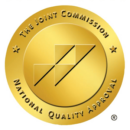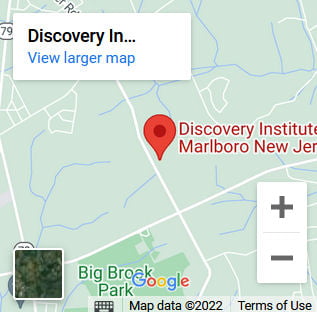Here’s the deal: there were over 10,000 overdoses attributed to psychostimulants in 2017.
This includes meth (methamphetamine). These numbers aren’t declining — they’re growing exponentially.
If you suspect a loved one may be using meth, time is of the essence.
Here’s an explanation of symptoms of meth use so you can recognize abuse and take action.
What is Meth?
To understand the signs of meth use, you must first understand what meth is.
Methamphetamine is a psychostimulant, meaning it acts on the central nervous system. It’s also classified as an amphetamine.
Meth came into society in the 30s as a prescription inhalant. Due to its euphoric and energetic side effects, it quickly became a substance of abuse.
Clandestine labs began popping up to manufacture and sell this substance on the street. Now, it goes by the following names:
- Ice (smokable meth)
- Crystal
- Snap, crackle, pop
- Go
- Tweak
It appears as a white to light brown crystalline powder or chunky crystals. It’s taken through ingestion, injection, snorting, or smoking.
There’s also legal methamphetamine prescribed for severe cases of obesity and attention deficit hyperactivity disorder (ADHD). It’s called Desoxyn and it has nearly the same chemical composition as meth.
Desoxyn is a white, oblong pill that has an R and the number 12 printed on it.
It’s rarely prescribed due to its addictive qualities. However, other commonly prescribed amphetamines include Adderall, Concerta, and Ritalin.
Even though these substances are more commonly used to treat attention deficit disorders, they’re addictive, abused, and potentially gateway substances to meth.
Why is Meth Addictive?
As previously mentioned, meth creates a sensation of euphoria in the user. It rushes the cardiovascular system with dopamine.
Along with euphoria, users experience the following symptoms:
- Energy
- Alertness
- Increased concentration
- Sociability
- Increased libido
- Higher self-esteem and self-confidence
The intensity and duration of these symptoms depend on the way the user takes the drug. The quickest and most intense effects occur with intravenous injection.
Injection is also known as slamming, mainlining, or shooting up. Injection has the most potent effects but leaves the system quickest. Therefore, this is the most common method for severe addicts.
The next “best” thing would be smoking it.
Addiction can occur with only a few uses. This is due to the potency and longevity of meth in the system. Users experience a high that can last up to 20 hours.
Once meth leaves the system, the user experiences a major crash where they feel depressed, fatigued, and irritable. This combined with chemical cravings for the substance leads to continued use.
There are several major problems with this occurrence. The first is that crystal meth has harsh, caustic chemicals in it. Over time, these chemicals have severe effects on the body.
Due to the highly addictive nature of the substance, overdose occurs more frequently. As the user becomes more and more addicted, they also become more volatile and likely to harm others.
It’s essential to notice symptoms your loved ones display before it gets to this point.
Symptoms of Meth Use
Paraphernalia
Paraphernalia is obvious evidence of meth use. What you may find varies based on the way the person uses it.
A common piece of paraphernalia is small baggies with white residue. This could be a tiny, sealable baggie, or a sandwich bag with the corner cut off.
Users who smoke meth must smoke it with something. This could be small pieces of aluminum foil, soda cans with holes in the sides, glass tubes, or gutted light bulbs.
When people smoke meth, there’s a burnt residue left behind.
If the user snorts it, traces of use include short straws and the shaft of writing pens. Intravenous injection requires syringes, armbands, and spoons.
If you find any of these items, it’s likely that your loved one has a substance abuse problem. Don’t ignore the paraphernalia. Get them help while you can.
Also, don’t rely on finding concrete evidence to confront them. There are many other obvious behavioral and physical signs of addiction.
Behavioral Signs
Meth causes people to stay awake for long periods of time, sometimes up to 15 days if there’s repeated use. The term for this is “tweaking”.
Tweaking results in fast and jumbled talking as well as jerky walking. In general, meth causes unusual activity. This makes users seem restless and hyperactive.
This hyperactivity manifests in twitching, tremors, and repetitive, obsessive behaviors. Users can seem nervous and anxious (“strung out”).
Even if only used once, meth causes insomnia and then narcolepsy.
The varying amount of dopamine in someone using meth results in mood disturbances. They may sometimes show violent, aggressive behavior due to paranoia and fear.
Increased libido and sexual stamina are a result of increased dopamine as well.
Dangerous symptoms of meth use include changes in judgment and prioritization. The house becomes filthy, children and pets become neglected, and extremely bad decisions occur.
Because of this, long-time meth users can’t operate “normally”. It becomes hard for an addict to maintain a family and a job. As the addiction continues, the desire to do so goes away as meth becomes the only important thing.
If you’re concerned about your loved one using meth and the signs aren’t obvious, they may be new to using meth. They may be hiding their addiction by isolating themselves. You or other family members may start seeing them less and less.
Also, they may hang around new friends that you or their family do not know. These new friends are probably fellow users.
Physical Signs
If your loved one displays any of these physical signs, an intervention may be necessary:
- Loss of appetite resulting in weight loss
- Weakened immune system
- Clogged or runny nose
- Sunken and baggy eyes
- Increased heart rate, resulting in sweating without heat or physical activity
- Sores on face and body from picking (a repetitive, obsessive action done due to the sensation of bugs under the skin)
- Discolored or rotting teeth (occurs because meth dries up saliva)
- Dilated pupils
Your Loved One is Not a Lost Cause
If there’s paraphernalia, behavioral, or physical symptoms of meth use present, take action. Even the most severe meth addictions can still get treated with detox and rehabilitation.
If meth addiction isn’t treated, it can very easily and quickly lead to overdose.
Read more about what’s involved in an amphetamine detox and get help for your loved one today.
Dr. Joseph Ranieri D.O. earned his BS in Pharmacy at Temple University School of Pharmacy in 1981 and His Doctorate Degree in Osteopathic Medicine at the Philadelphia College of Osteopathic Medicine in 1991. He is Board Certified by the American Board of Family Medicine and a Diplomate of the American Board of Preventive Medicine Addiction Certification. Dr. Ranieri has lectured extensively to physicians, nurses, counselors and laypeople about the Disease of Addiction throughout New Jersey and Pennsylvania since 2012.



